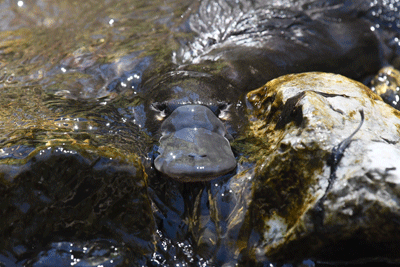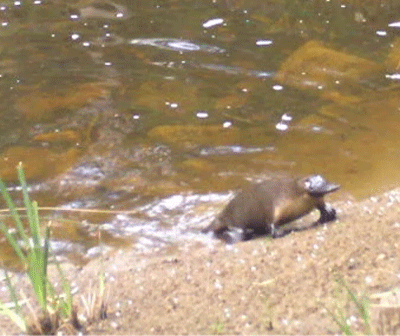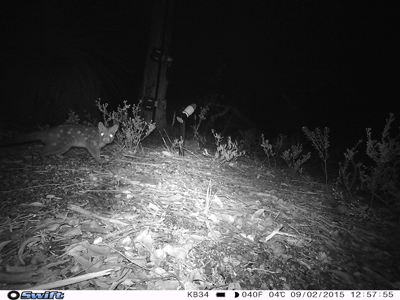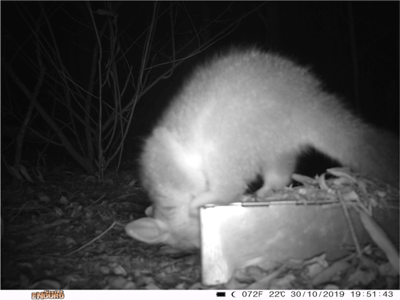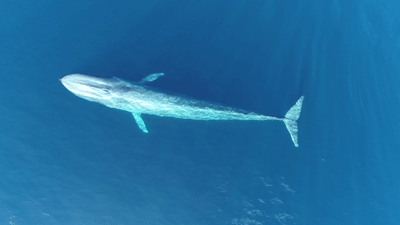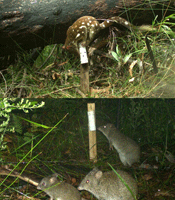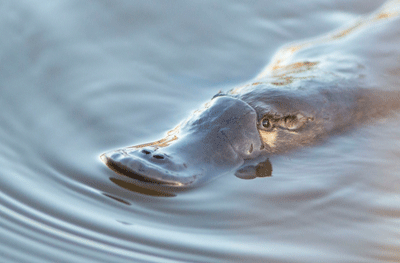Nutritional value of plants available as food for bare-nosed wombats was assessed at sites within NSW. Significant seasonal and site differences were determined. Wombats are affected by sarcoptic mange, which affects their metabolic rate and nutrient needs; therefore, supporting nutrition and health of wombats is important for conservation of this species.
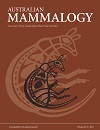
Australian Mammalogy
Volume 46 Number 2 2024
The carnivorous marsupial genus Antechinus is well known for exhibiting suicidal reproduction – every year, all males die after the 1–3 week breeding period. The death of males presents an opportunity for cheap energy gain via cannibalism for still-living male and female antechinuses. Here, we report cannibalism in the mainland dusky antechinus (Antechinus mimetes mimetes) – an individual was observed eating a dead member of its own species during the breeding period. This is rare field-based evidence of opportunistic cannibalism in a mammal.
Most translocations of Shark Bay mice have failed, and a lack of understanding about what habitat types are important may be a contributing factor. We assessed habitat associations of Shark Bay mice on Faure Island and found, contrary to previous research, no clear or consistent association with coastal spinifex. Our study shows that relying on limited information from the remaining island population of this once-widespread species may have led to incorrect conclusions about what habitat features are important.
Because of their cryptic nature and being active predominately at night, movement of wild platypuses is poorly documented. Our studies of their movements in the upper Jenolan River showed them moving around and through natural and artificial instream structures, including across weirs, through culverts, around waterfalls and entering caves. This research is important to the management and conservation of the species in relation to human activities in rivers. Photograph by Anne Musser.
AM23031 Abstract | AM23031 Full Text | AM23031PDF (13.8 MB) | AM23031Supplementary Material (604 MB) Open Access Article
AM23045Use of consolidated time-lapse camera imagery to detect and monitor platypus (Ornithorhynchus anatinus) activity
We investigated how equipment-related differences and sources of spatial and temporal variation affected how often platypus activity was recorded by time-lapse camera models along a southern Tasmanian creek. The results confirm that time-lapse cameras can be a useful tool for platypus detection and monitoring. Photograph by Simon Roberts.
AM23045 Abstract | AM23045 Full Text | AM23045PDF (1.5 MB) | AM23045Supplementary Material (885 KB) Open Access Article
AM23035Death of a wombat†
Wombats are interested in their dead. We found that Southern hairy-nosed wombats of a warren often inspected the body of a wombat that died there. Such interest may help wombats understand death as something different from life.
Many wildlife studies using camera traps require a high probability of animal detection and, depending on study aim, the ability to identify individuals. For a cryptic species this can be difficult, but testing different setups for camera traps improves both detection and individual identification. In the case of the chuditch, a medium-sized marsupial carnivore, paired cameras at 30 cm height had the best Detection and Identification probability. This setup can be used in a variety of chuditch studies to gather more useable data and would increase the reliability of results such as population density estimates. Photograph by Melissa Taylor.
AM23026A pilot study to encode calls from the northern yellow-bellied glider
In Far North Queensland, passive acoustic monitoring has been used to study the yellow-bellied glider, a species threatened by habitat loss and fragmentation. However, because this species is very vocal, it is likely that more information – related to gender, season or individual-specific parameters – can be extracted from its calls. We present an attempt to analyse acoustic parameters and their variability in components of full calls of this species as a basis for more meaningful acoustic monitoring.
Some Australian mammals may exhibit prey naivety and not react to introduced predators. Using camera traps, we assessed how native mammals reacted to predator faeces placed in front of the traps. Presence of predator faeces did not influence trap or camera captures. Photograph by Meg Edwards.
AM23029Comparatively poorer body condition of south-east Indian Ocean pygmy blue whales on their southern migration
Body condition is important for successful migration, reproductive success and survival. Knowledge surrounding nutritional health of south-east Indian Ocean (SEIO) pygmy blue whales is currently lacking. We aimed to quantify and compare the body condition of SEIO pygmy blue whales at two points during northbound and southbound migration between south-west Australia and Indonesian waters. Results indicate the poorer condition of southbound migrating individuals and highlight the need to learn more about the nutritional health of this endangered species. Photograph by Grace Russell.
Camera-trapping programs need to be informed by decisions made around bait and camera type, as well as camera deployment and service intervals. This study investigated these factors in relation to the detection of eight medium-sized mammal species, including three threatened species: the spotted-tailed quoll; long-nosed potoroo; and Parma wallaby. Photograph by R. Goldingay.
AM23048Platypus longevity: a new record in the wild and information on captive life span
A new platypus longevity record in the wild (nearly 24 years) has been confirmed for a male living in a creek in Melbourne's southeastern suburbs. In captivity, a female platypus recently reached the age of 30 years at Healesville Sanctuary. Photograph by Barry Baker.
AM23048 Abstract | AM23048 Full Text | AM23048PDF (1 MB) Open Access Article
AM23046Scat contents of a spotted-tailed quoll (Dasyurus maculatus) reveal evidence of broad-toothed rat (Mastacomys fuscus) within a fragmented habitat in the Hunter Valley, New South Wales
A spotted-tailed quoll (Dasyurus maculatus) scat collected in a fragmented habitat in the Hunter Valley, NSW contained evidence of a broad-toothed rat (Mastacomys fuscus). Given the nearest population of broad-toothed rat is located 50 km away in the Barrington Tops, this is a potentially important discovery for the conservation of this threatened species.
In the current context of climate change, megafires pose a severe threat to koala populations. Accurately assessing the impact of fire on a large scale is essential to provide an effective response to aid koala conservation. We found that satellite images were as effective as on-the-ground data in predicting post-fire koala occurrence in Mid North Coast NSW. Our results support the use of satellite-derived variables to efficiently monitor the fire impact on koala populations in the region.



